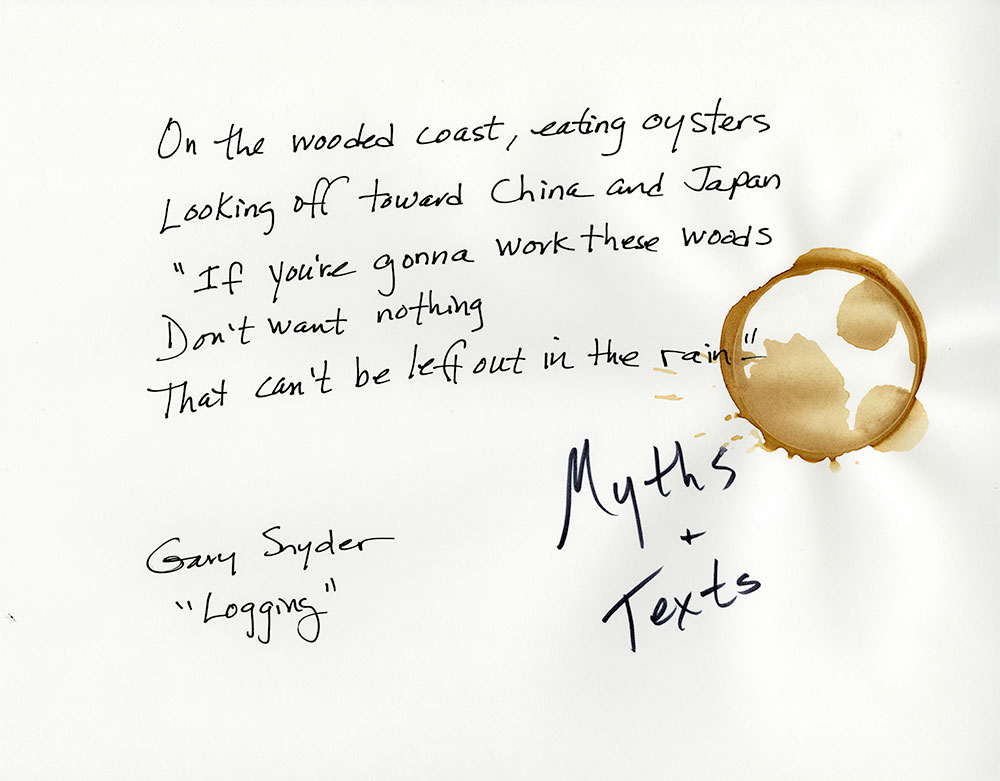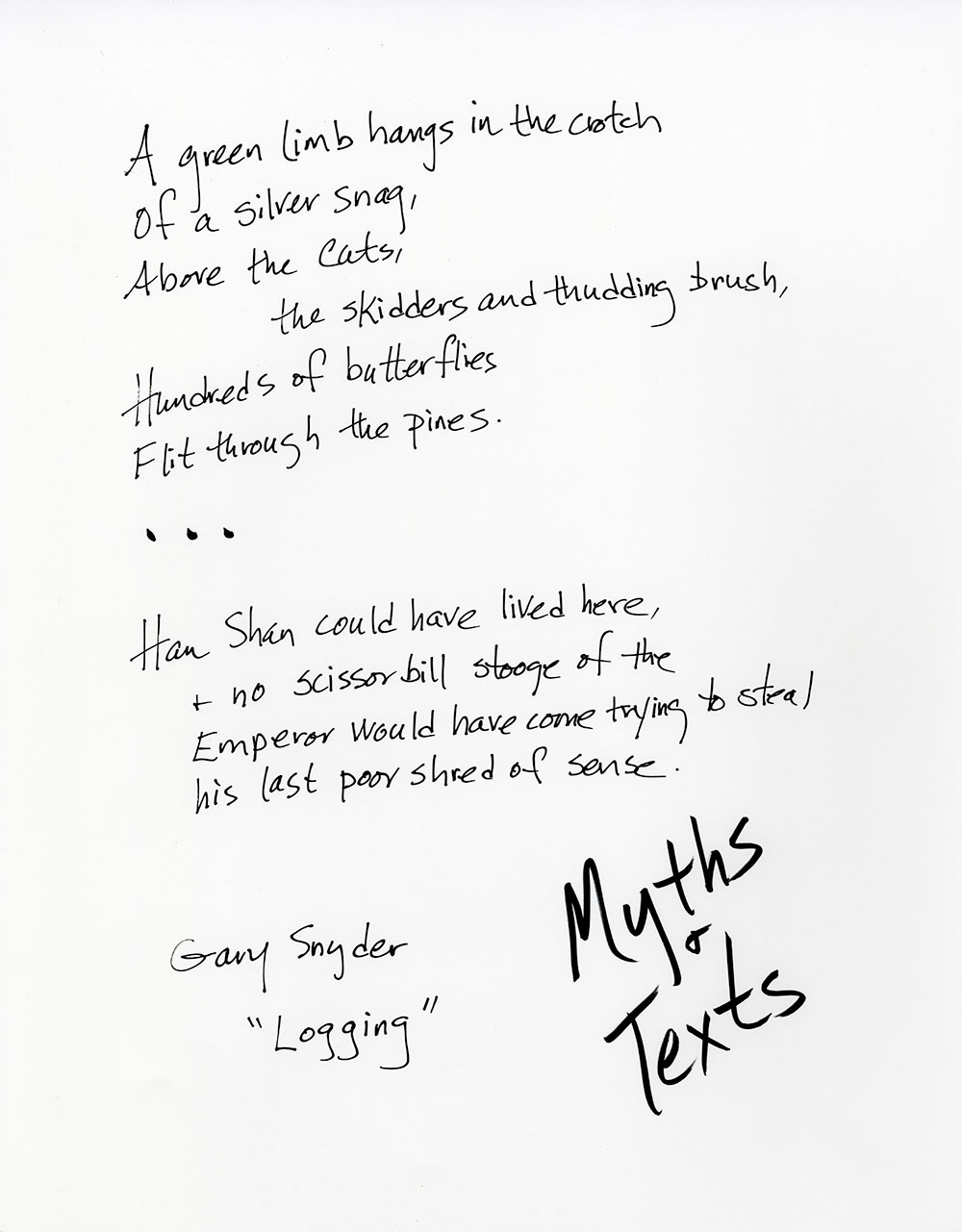I was eighteen when I picked up the original edition of Snyder’s Myths & Texts, a staple-bound chapbook published by Totem Press in 1960.
I had been writing poems for several years, and even had published a few, but something new happened in those pages: I heard/saw for the first time how a web of sound could juxtapose unadorned image + simple statement into something…not exactly larger than its parts, but other than its parts. No longer were expansive and intensive poetics opposed: they were allies, creating the voice of a mind and a body finding place on earth.
Always a walker in woods and hills, observer of birds, weather, and ways, I was immediately drawn to the lived, practical, right here moments in the book’s three sections, “Logging,” “Hunting,” and “Burning.” It didn’t matter that I had neither logged nor hunted, nor that my future in wildfire country was at that moment undreamt of; what I recognized was the rhythmic movement of attention from body to mind, image to abstraction, the human and the wild.
In the poem from “Logging” I chose to accompany this essay, I recall the sensation of leaping awareness, the joy and surprise of finding my infant knowledge of Taoism, Buddhism and Native American cultures embedded in and calling through this work of imagistic intensity, historical consciousness, and practical humor.
What is political here? Everything, simply because it is everything. (Also, I really, really love oysters.)





